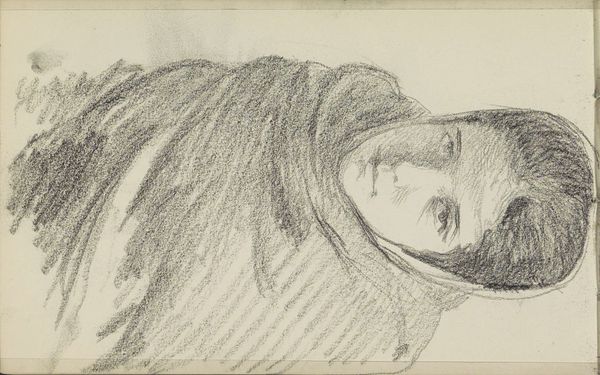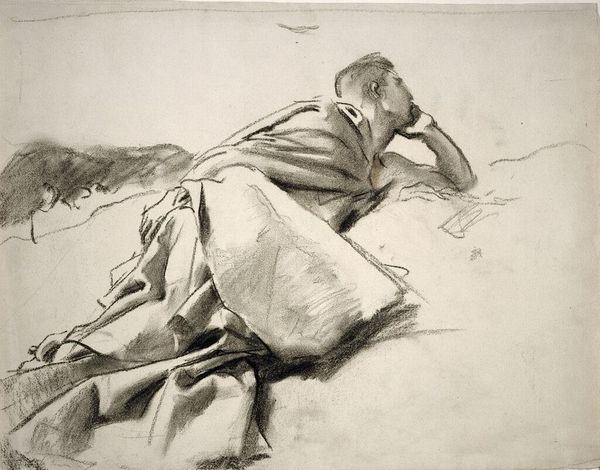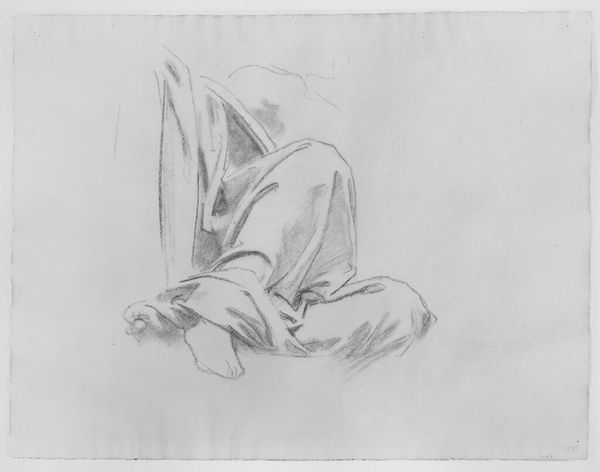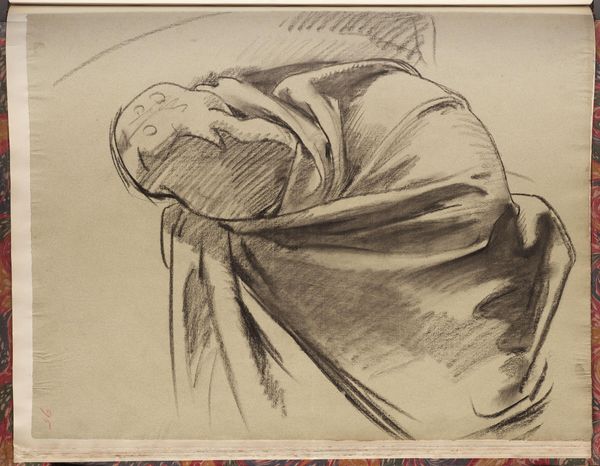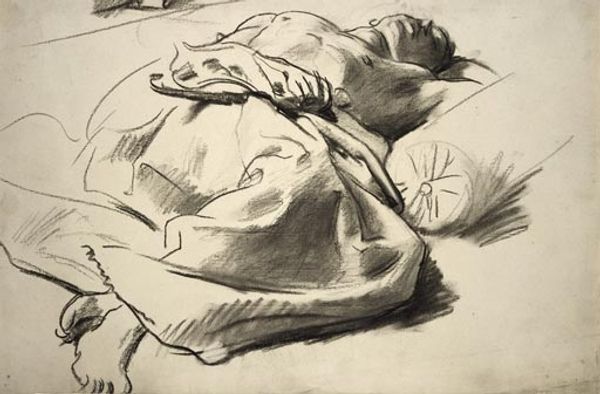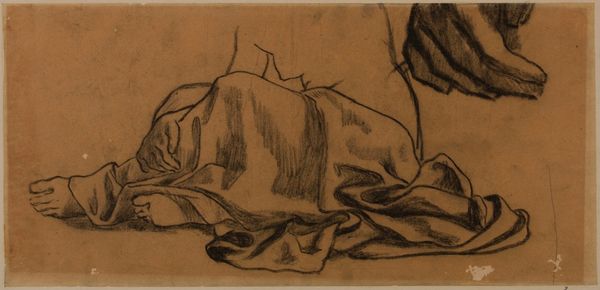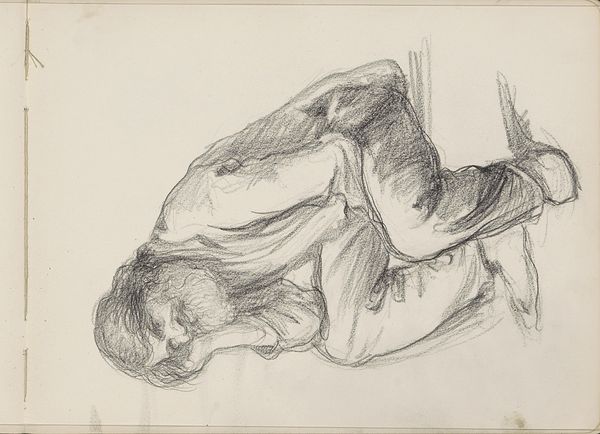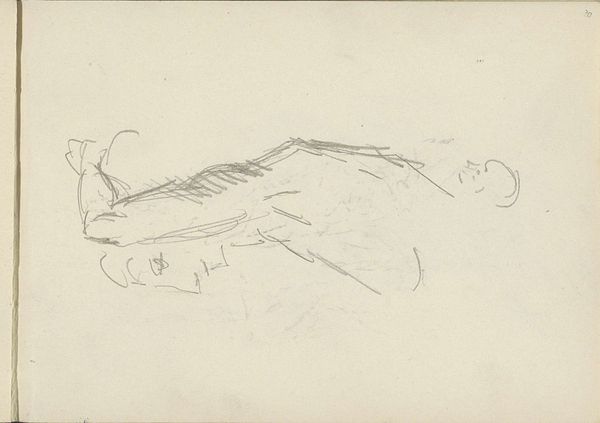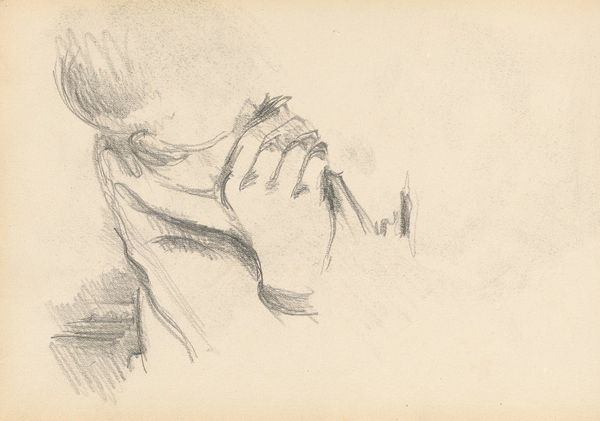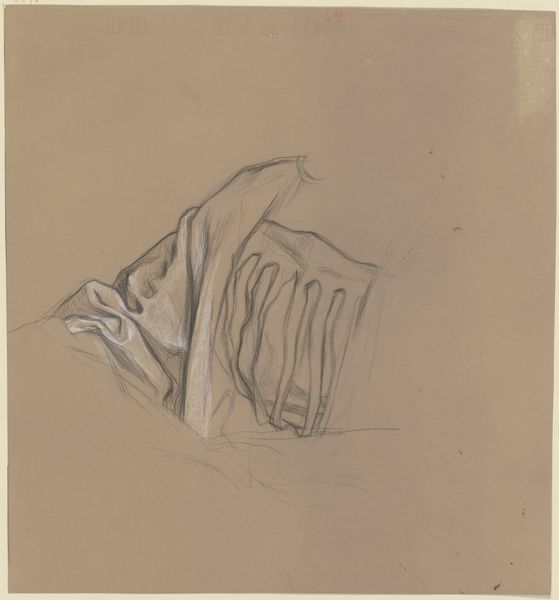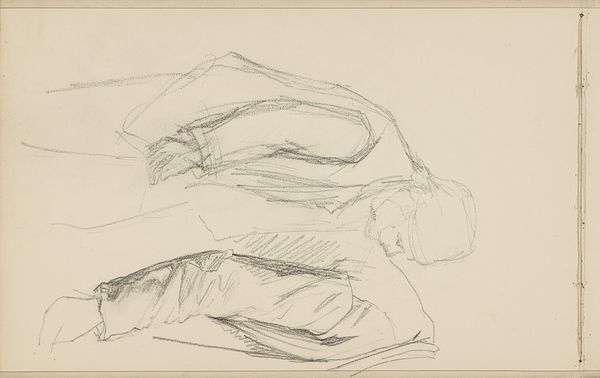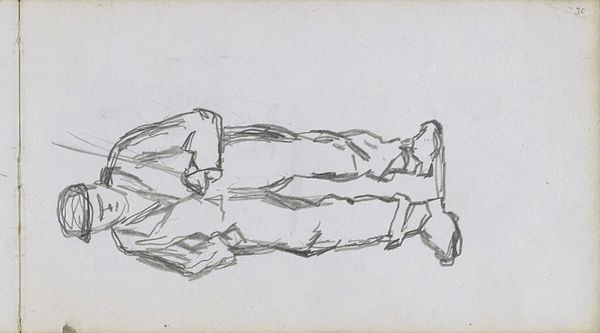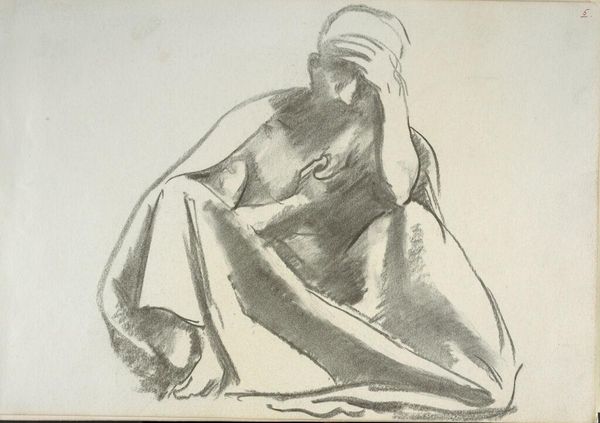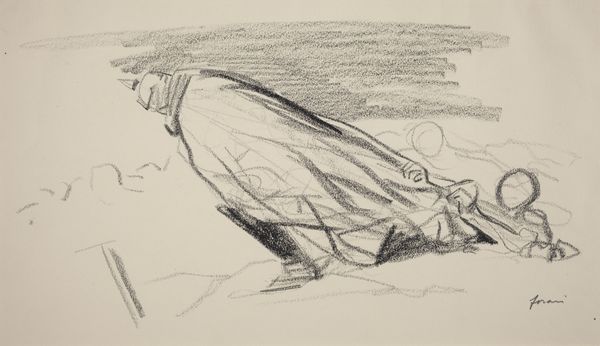
drawing, oil-paint, pencil
#
drawing
#
oil-paint
#
landscape
#
figuration
#
pencil
#
academic-art
Copyright: Public Domain: Artvee
Editor: Here we have John Singer Sargent's "Study of the Crucifixion for ‘Fifteen Mysteries of the Rosary’", dating from around 1903 to 1916, done in pencil and oil. It’s really just a sketch, but the folds of fabric and the overall composition feel heavy, burdened. What do you make of a study like this within the context of Sargent's larger body of work and its historical moment? Curator: That sense of burden you perceive is significant. Sargent, while known for his society portraits, received this commission to create murals for the Boston Public Library. This was a massive, public undertaking, shifting his role. A study like this shows his engagement with religious themes, but more importantly, it shows how institutions shaped even an established artist's path. Think about it: this study, not just about religious expression, but about navigating the expectations and demands of a large public project. Editor: That's interesting. So, the socio-political context—the library's commission—becomes part of the artwork’s meaning itself, even within a preparatory drawing. Curator: Exactly. And look at his choice of medium, shifting between pencil and oil paint. What might that suggest? Was he seeking precision, or exploring tonality to maximize the painting's impact on the viewer? Sargent was aiming to communicate with a broad audience through a very traditional religious motif. We need to consider how images function in public space and reinforce, or sometimes subvert, established hierarchies and shared beliefs. Editor: So, Sargent is making something to affect a very diverse audience, which is inherently different from creating a work to simply display at a gallery? Curator: Precisely. And those factors inevitably affect the artistic choices being made. This study is a powerful reminder that the production and reception of art are intertwined with societal factors. Editor: I hadn’t considered how profoundly a public commission could impact the creative process. Curator: That’s how art can influence a very broad public.
Comments
No comments
Be the first to comment and join the conversation on the ultimate creative platform.
